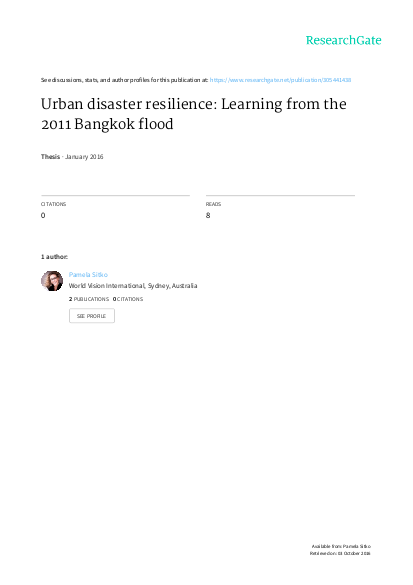
Reducing disaster risk, managing rapid urbanisation and tackling poverty is an enormous challenge, particularly in vulnerable neighbourhoods in low and middle-income countries. By 2050, two-thirds of the world’s population will live in towns and cities, with 95 per cent of future urban expansion in the global South. At the same time, disasters are increasing in frequency, severity and intensity. Poorer people in vulnerable neighbourhoods are least equipped to cope with the threat of disaster. When flooding struck Thailand’s capital city Bangkok in 2011, the United Nations estimated that 73 per cent of low-income households were badly affected (UNISDR 2013). With disasters in cities on the rise, current thinking suggests that resilience offers valuable insights for reducing risk.
Links
Resource collections
- UN Habitat - Urban Response Collection
- Urban Response - Urban Crisis Preparedness and Risk Reduction
- Urban Response Collection - Community Engagement and Social Cohesion
- Urban Response Collection - Economic Recovery
- Urban Response Collection - Environment and Climate Change
- Urban Response Collection - Housing, Land and Property
- Urban Response Collection - Urban Crisis Response, Recovery and Reconstruction
- Urban Response Collection - Urban Resilience